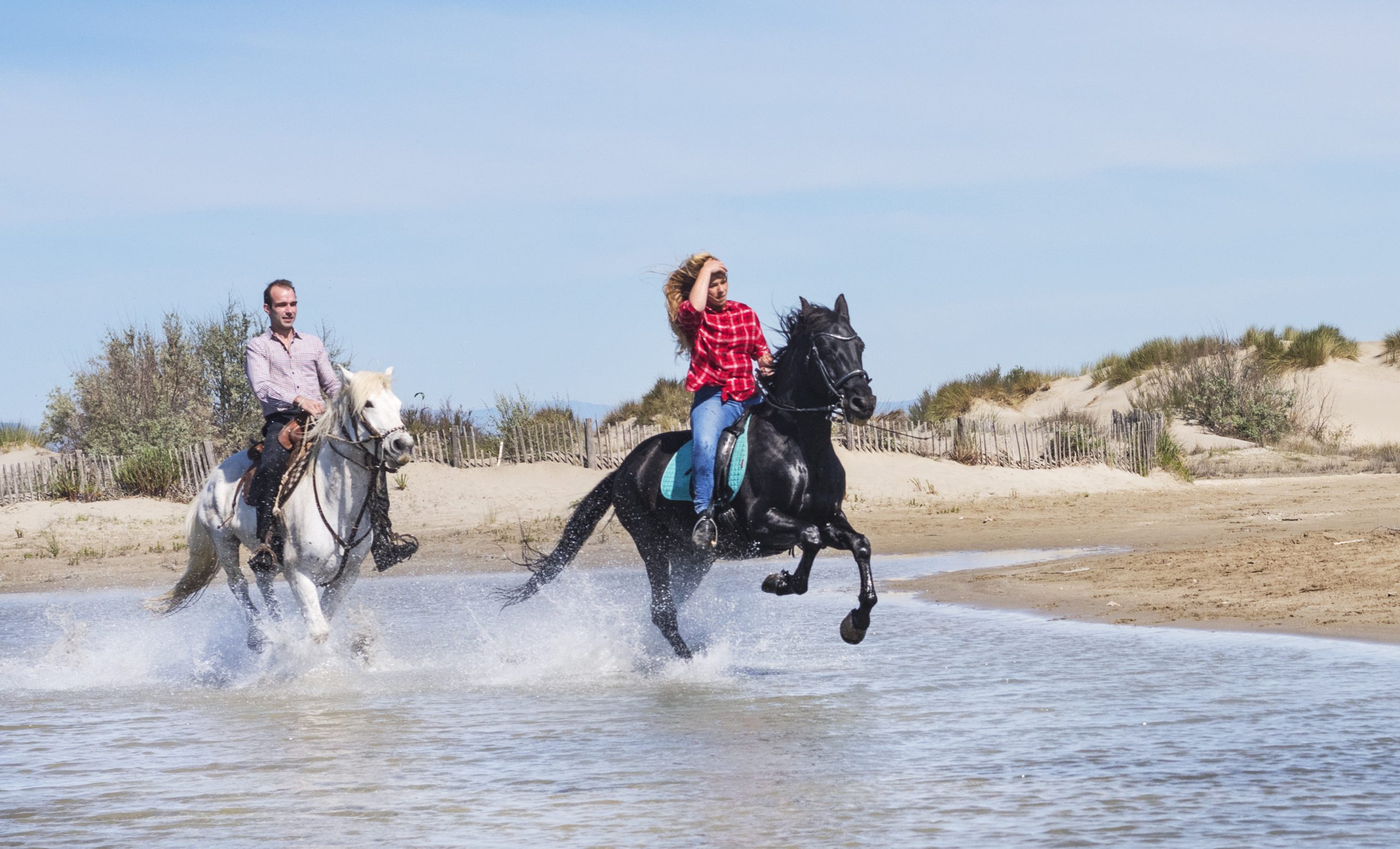
Molly Manning Walker’s confident, vivid, and emotionally charged feature debut “How to Have Sex” emerged as an early word-of-mouth breakout at Cannes even before it won a top prize from the festival’s Un Certain Regard section. Following three 16-year-old best friends on a post-exam group holiday to Crete, the film—which was acquired by MUBI out of its Cannes premiere—is a corrective to the raucous sex comedies more often associated with spring break on screen, instead delivering a sensitive and sobering exploration of the sexual anxieties underlying what has become a rite of passage for many teenagers in the United Kingdom.
Fishbowl drinks, foam parties, and hordes of drunken revelers await those vacationing in European party hotspots such as the Cretan resort town of Malia, which exists away from Greece’s ancient ruins and vibrant culture while giving normally sensible teenagers the chance to strip down, drink up, and let loose. Arriving in their poolside hotel suite with sunshine, spirits, and sex in mind, Taz (Mia McKenna-Bruce), Skye (Lara Peake), and Em (Enva Lewis) all agree they’re ready for the “best holiday ever,” bantering and cheering one another on as they try out their skimpiest outfits and pre-game with tequila. Amid all the booze-fueled bacchanalia, they’ll aim to avoid thinking about their soon-to-be-announced GCSE results; only studious Em is of the opinion she’ll be heading off to college in the fall, while Taz and Skye believe their futures are less certain.
For Taz (Mia McKenna-Bruce), the most ebullient and least experienced of the three, partying in Malia feels like an ideal opportunity to lose her virginity, a mission her friends loudly support. Once the girls meet a slightly older set of holidaymakers in the room next door, including cheerfully clueless Badger (Shaun Thomas) and his two friends Paddy (Sam Bottomley) and Paige (Laura Ambler), the groups end up hitting the pools, bars, and clubs together. As Taz forms a connection with one of the boys, people start to pair off.
But even as Manning Walker and her director of photography Nicolas Canniccioni immerse the audience in Malia’s frenzied hedonism, glimmering sweat, and pulsating, bass-heavy Day-Glo clubscapes, the mood here is one of quiet foreboding and uneasy dissociation. Much like last year’s “Aftersun,” another feature debut set at a European holiday resort, “How to Have Sex” is awash in intimate silences, and its characters’ sense of uncertainty lend the film a haunting emotional undertow that only deepens its queasily visceral impact.
The low-simmering tensions between Taz and her friends, the barbed jokes Skye makes at her expense and the competitive jealousy that builds between them as they vie for male attention, leaves Taz feeling unhappy and isolated. Once Taz loses her virginity, a disorienting experience that causes her to withdraw even further, her confusion casts a dreadful pall over the film’s second half, the atmosphere’s low neon buzz fading as the sun rises and the hangovers hit. Navigating the bramble of thorny emotions she feels over this long-awaited moment, Taz struggles to discuss with her friends what has transpired, to articulate it herself. But as the week progresses, her sense of devastation proves difficult to shake, and her friends begin to question why she seems so uncharacteristically subdued.
McKenna-Bruce is magnetic in what should be a star-making performance; conveying the innocence concealed by Taz’s party-hard attitude and capturing the lingering pain of her internal processing. And Manning Walker is careful never to judge her characters or resort to reductive didacticism, instead approaching “How to Have Sex” as an unflinching but empathetic look at consent, violation, and the surrounding gray areas of sexual experience. This is fresh, passionate, and remarkably assured filmmaking, made with ample energy and even more exhilarating clarity of vision.

Also acquired by MUBI for worldwide release shortly following its premiere in the Un Certain Regard lineup at Cannes was Rodrigo Moreno’s “Los Delincuentes,” a consistently playful, gradually beguiling existential dramedy on the multitudinous subject of work and freedom from a well-regarded figure of the New Argentine Cinema movement.
Paced across a leisurely winding 189 minutes, the film opens as a heist film of sorts, with long-time bank employee Morán (Daniel Eliás) stealing a rather modest sum from his workplace—by his calculations, it’s twice the amount he would make if he continued at the bank until retirement age—with a plan to turn himself in and retrieve the money once released from prison. Morán is tired of working, he tells coworker Román (Esteban Bigliardi) while dragging him into the scheme. In exchange for concealing the cash from investigators, he says, Román can have half of it, and they can both retire comfortably. As for the prison sentence, that’s easy math—he’d rather sit behind bars for three and a half years than work for 25 more.
From this premise, inspired by the 1949 crime drama “Hardly a Criminal,” Moreno bounces between his two characters, moving back and forth in time as well, with Morán learning the ins and outs of life behind bars as Román sweats his way through interrogations from his suspicious boss (Germán De Silva). That De Silva also plays another prisoner who extorts money from Morán, and that the layout of the cell block resembles the floor of the bank where Román still works, are only two of the ways Moreno finds to rhyme the experiences of his anagrammatically named protagonists.
Once Román heads to the Cordoba countryside in order to hide the stolen money, he meets free-spirited sisters Norma (Margarita Molfino) and Morna (Cecilia Rainero) and begins a romance with the former, despite the fact of a pre-existing relationship back in Buenos Aires. Moreno’s love of anagrams extends even further, to a filmmaker Ramón (Javier Zoro) who’s friendly with both women and enlists them for his projects. Especially beautiful to look at in this mid-section, as the characters leave behind the drab confinements of city establishments for bucolic, wide-open natural landscapes, “Los Delincuentes” sets cinematographers Inés Duacastella and Alejo Maglio free to play; their lighting’s abundance of contrasts illustrates the mundanity of labor and the liberating potential of leaving it behind for parts unknown,
As “Los Delincuentes” meanders along, it becomes looser as a narrative, more surreally unbound and digressive, with the sensorial pleasure of all Moreno’s formal innovations—including creative use of split-screen, screen wipes, and crossfades, all of which draw unexpected, intriguing connections between his characters—dovetailing nicely with the film’s thematic preoccupations. Less necessary are the film’s inevitable professions of cinephilia through the character of Ramón, who holds the story hostage for too long a stretch to deliver a predictable “cinema is dead” diatribe. Still, in a metatextual echo of his characters’ journeys, and in solidarity with their desire for freedom, Moreno has made an odd, endearing dramedy that plays by no one’s rules but its own, toying with the narrative traditions of various genres before eschewing each of them in turn to traverse a more quixotically offbeat and open-ended path.

Also premiered in Un Certain Regard this year was “The New Boy,” from Australian director Warwick Thornton. A Kaytetye filmmaker, Thornton has been telling stories about Australia’s Indigenous people and the country’s vast interior since his debut feature “Samson and Delilah,” an elliptical love story that won the Camera d’Or at Cannes in 2009. It took eight years for Thornton to craft his follow-up, the near-Biblically-scaled Western “Sweet Country,” as ferocious and soul-scorching an exploration of frontier justice and its colonial underpinnings as any film on the subject I’ve seen.
Thornton’s latest, “The New Boy,” is set in 1940s Australia, away from the battlefields of World War II, and opens with one of the transfixing tableaux that makes his cinema singular: that of a lone Aboriginal child (Aswan Reid), escaping through the Outback, as a horseback police patrol looms in the periphery. Captured and taken to a remote monastery orphanage, where devout Sister Eileen (Cate Blanchett) works to protect her charges from darkness and instruct them in the traditions of her faith, the child at first struggles to fit in.
Gradually, it becomes clear he grasps more than he lets on. That the boy possesses mysterious powers, connected to his Indigenous spiritual life, also complicates Sister Eileen’s efforts to subjugate him with a Christian education. Once a wooden crucifix arrives at the monastery, sent from Europe to ensure its safety during the war, a spiritual struggle intensifies between the child, who is both confounded and compelled by the Christ figure, and Sister Eileen, who interprets his fixation as an affront even as she seeks to deliver the boy’s soul. As the child performs a series of miracles, revealing his powers to the monastery, Sister Eileen is forced to question her own faith.
Inspired by Thornton’s own upbringing, during which he was sent away to a remote boarding school run by Spanish monks and challenged by a vision of Christianity at odds with his own Aboriginal spirituality, “The New Boy” feels like an extremely personal project; at the premiere screening, Thornton said that it had been 18 years in the making. One wonders, as the project marinated, at what point the increasingly anguished and erratic behavior of Blanchett’s nun became central to the story. Though the actress, who also produced “The New Boy” with her husband Andew Upton, was likely instrumental in making the film, Sister Eileen’s vacillating attitudes toward the boy become difficult to parse and ultimately distract from the script’s focus on his intrinsic connection to Aboriginal spiritual traditions. Thornton’s underlying critique of Christianity’s colonial impulses, its inability to coexist alongside other spiritualities without dominating them, is borne out by the film’s conclusion, but not before the film is sequestered by Blanchett’s star power, which shifts the focus from Reid’s excellently gestural performance without offering a comparably resonant counterbalance.
Despite its flaws, “The New Boy” is elevated by some of Thornton’s most atmospheric work behind the camera to date. Serving again as his own cinematographer, as he has done since “Samson and Delilah,” Thornton conjures the otherworldly power of Australia’s scorched red earth and its strange, vivid sunsets; in this story of spiritual resilience and communion with the divine, the landscape is an abiding, almighty presence, golden grasses undulating beneath deep blue skies. The neo-classical score, by Nick Cave and Warren Ellis, is another standout, as attuned to the Outback’s stunning, near-hallucinatory grandeur as Thornton’s own lyrically gorgeous compositions.




